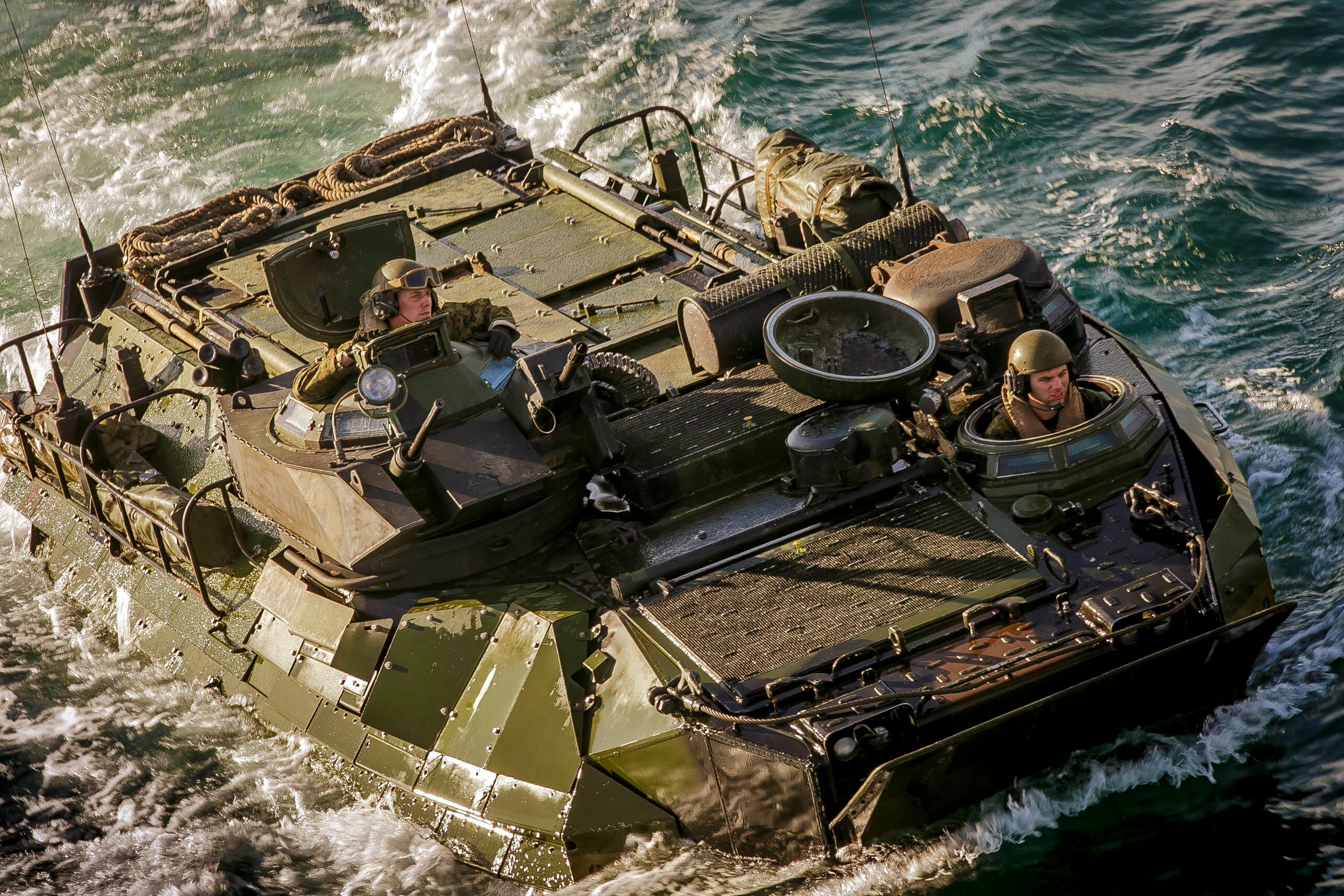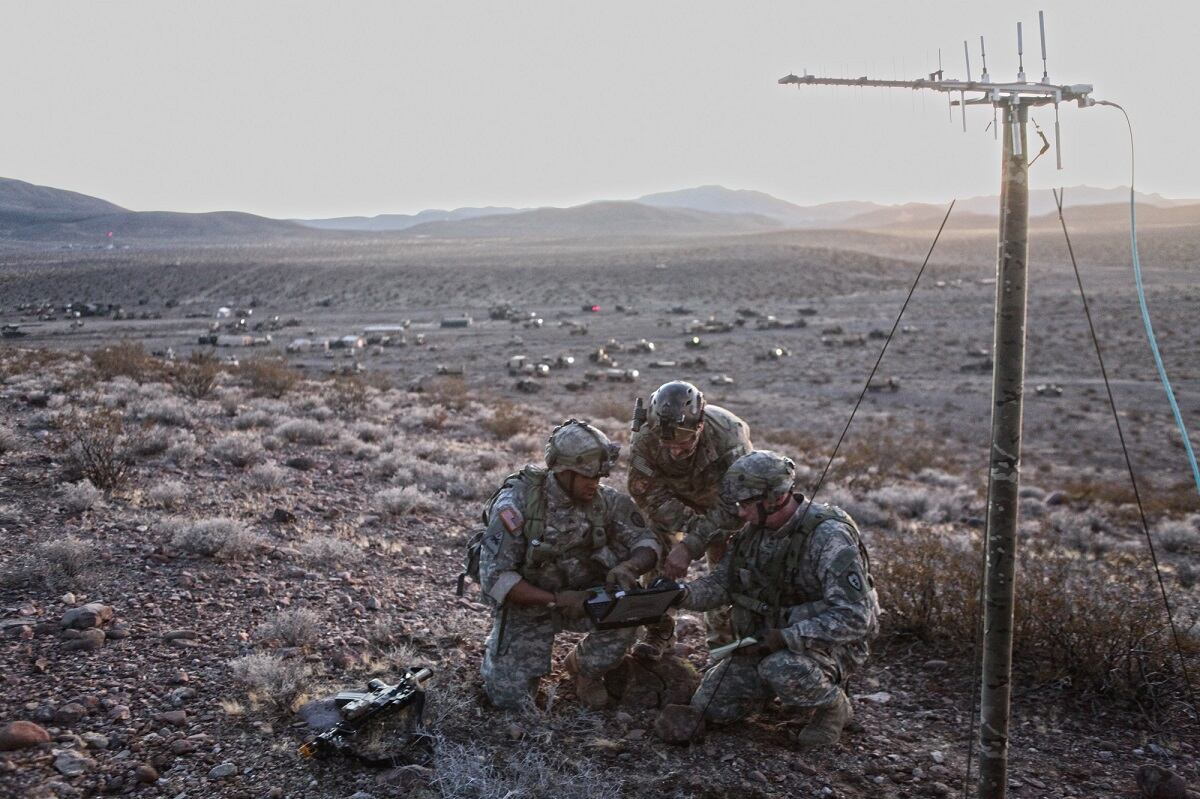A new Army document suggests that the service adopt the playbook of its closest competitors and engage with adversaries below the threshold of armed conflict, a tactic the Pentagon has traditionally eschewed.
“In a state of continuous competition, China and Russia exploit the conditions of the operational environment to achieve their objectives without resorting to armed conflict by fracturing the U.S.’s alliances, partnerships, and resolve,” the new concept document, titled “U.S. Army in Multi-Domain Operations 2028," reads. The concept was released publicly in early December.
RELATED

Adversaries have used unconventional tactics through social media, false narratives and cyber attacks, the document states. Additionally, those countries and non-state actors have sought to use these asymmetric capabilities, such as cyber, to conduct corporate espionage and lift sensitive personnel files from government databases, all during the absence of a true military conflict.
Officials said contesting adversaries in what’s described as “the compete phase” will be critical for the Army to be successful. This is a shift in thinking, they said.
“We are reluctant to compete on a scale that we will have to in the future largely because of culture. If you go back to the origins of the nation, we really don’t see ourselves as a warfighting people and we see war as anomaly,” Lt. Gen. Eric Wesley, deputy commanding general of Futures Command, told reporters during a media call Dec. 7. “Our peers don’t look at the world quite like that and they see continual conflict on a spectrum or on a continuum.”
As such, Wesley said given the effectiveness of information as a weapon today, the time available to move from peace to war or “right of conflict” is a narrow window.
“If you miss that window, you find yourself well behind,” he said.
This is why much of the military, including the Army, have determined there needs to be a constant engagement with adversaries, below this threshold.
“You can’t just wait until you’re in conflict. This idea of competition really does mandate persistent access and engagement even in the information space,” Brig. Gen. Jennifer Buckner, director of cyber within the Army’s G-3/5/7, said during a conference in Washington Nov. 29. “The National Defense Strategy specifies information warfare, which is actually not a doctrinal term but is really what all of us have been trying to describe and I think it’s been significant on the non-kinetic effects side because it really forces us to think that we have to consider placement and access in the information space.”
The Army’s concept notes that the information operations must evolve to an information environment operations (IEO) to support multidomain operations. The distinction is that information environment operations synchronize information-related capabilities that can provide commanders additional ways to degrade, disrupt, or destroy threat capabilities that inform or influence decision making.
“An integrated IEO campaign may include the use of the cyberspace domain, the space domain, and the [electromagnetic spectrum],” the document states.
Wesley said the Army concept includes three components in this regard that all must occur simultaneously and aggressively in order to be effective.
The first is countering unconventional warfare and information operations occurring globally, which he said the force is not sufficiently effective at countering. Second, is the ability to conduct intelligence preparation of the battlefield, which is a departure from the past in that today it requires significant digital engagement and stimulation to monitor the status of opponents. Third, is deterrence.
From the Army’s perspective, Wesley said the service provides the interagency, joint force and coalition partners a platform to levy these capabilities.
In its simplest terms, the Army lays out in it concept document three ways to solve problems presented by Russia and China:
- Calibrated force posture, which is the combination of position and ability to operate across strategic distances;
- Multidomain formations, which means having the capacity, capability and endurance to operate across all the domains of battle, and;
- Convergence, which is the “rapid and continuous integration of capabilities in all domains, the [electromagnetic spectrum], and information environment.”
RELATED

Mark Pomerleau is a reporter for C4ISRNET, covering information warfare and cyberspace.








